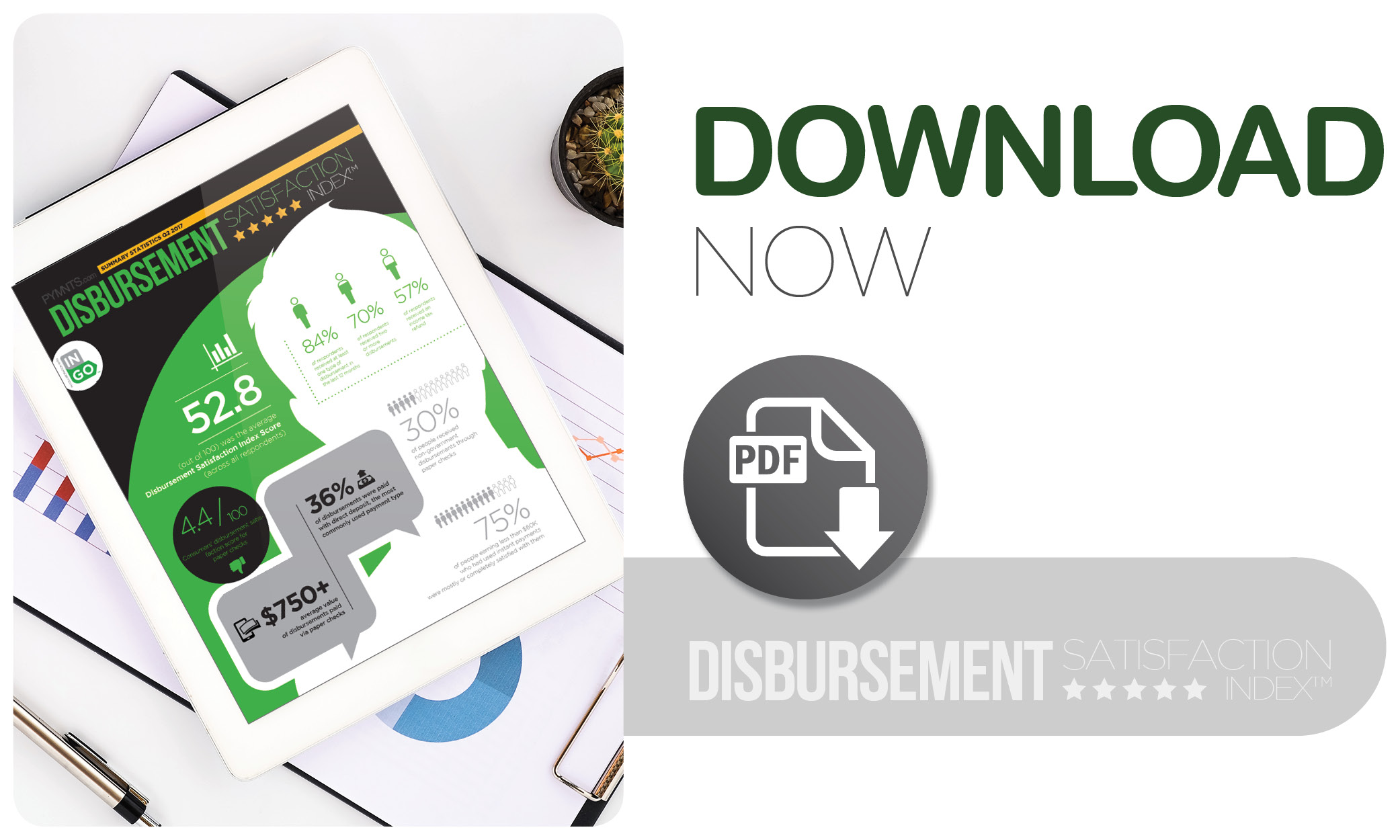NEW STUDY: Consumers Hate Getting Checks, Why Do Companies Still Send Them?

Paper checks are clunky, unpopular and outdated. So, why do they still dominate the American economy, with more than $22 trillion in checks written each year?
Ask the ones writing the checks. It seems most third-party disbursers, such as law firms and insurance companies, have little care for consumer satisfaction when it comes to disbursements.
That’s bad news for consumers, though, who have made it clear they feel it’s time to #KillTheCheck. They rated checks as the worst disbursement method, giving it a score of 4.4 out of 100 in the inaugural PYMNTS Disbursement Satisfaction Index™, in collaboration with Ingo Money. Meanwhile, alternatives like non-instant credit (48.3), instant credit (71.9) and direct deposit (100.0) all massively outscored the paper check.
But, those third-party issuers making the disbursement payments to consumers hold the power when it comes to which payment method to use. These disbursers typically use that authority to lean on established and trusted payment methods for the size and frequency of their transactions.
And so, paper checks persist, despite their low consumer satisfaction score and costs to the businesses processing the payments.
But the tide may be beginning to turn — with a #KillTheCheck undertow — consumers are forcing frequent disbursers to take heed of their dissatisfaction with paper checks. And, ready to take its place, or at least stake out a larger claim to the overall disbursements pie, could be fast-funding direct deposits, which PYMNTS research found are used for more than three-quarters of government disbursements.
Here are some other key takeaways from the inaugural edition of the Index:
- The average Disbursement Satisfaction Index Score, across all payment methods and respondents, was 52.8 (out of 100).
- Eighty-four percent of respondents received at least one type of disbursement within the last 12 months.
- Seventy-five percent of respondents earning less than $60K who had used instant payments were mostly or completely satisfied with the experience.
- The average value of disbursements paid via paper checks is $750. Meanwhile, consumers’ satisfaction score for paper check stands at 4.4 out of 100.
To find the rest of the data and insights, including more than 2,243 data points, check out the inaugural PYMNTS Disbursement Satisfaction Index™.
How ride-hailing apps disburse payments
Disbursement payments can be crucial for gig workers like rideshare drivers who work for popular platforms such as Uber and Lyft. After all, it’s how they get paid.
For the inaugural edition of the PYMNTS Disbursement Satisfaction Index™, in collaboration with Ingo Money, PYMNTS conducted a series of interviews with Lyft and Uber drivers based in Portland, Oregon — one of the fastest growing rideshare markets in the U.S. — to gauge drivers’ satisfaction with the disbursement methods offered by both platforms.
Many drivers told PYMNTS they are mostly content with how they’re paid by the ridesharing platforms, but they did have some complaints. Common complaints centered around how often they are paid. Both platforms offer “free” payments once per week, and also provide an instant payment option which does have a small fee tacked onto each payment.
“I’d like to see us not get charged,” one rideshare driver told PYMNTS. “But it’s better than waiting until the middle of the week to get paid.”
To read the story, check out the Index. And, of course, #KillTheCheck.
To download the inaugural issue of the PYMNTS Disbursement Satisfaction Index™, in collaboration with Ingo Money, click the button below.
The PYMNTS Disbursement Satisfaction Index™, in collaboration with Ingo Money, is designed to help measure consumer satisfaction with various disbursement methods, including paper checks, instant credit, non-instant credit and direct deposits. The Index offers a microscopic look at the state of consumers’ satisfaction with how they receive disbursements.

